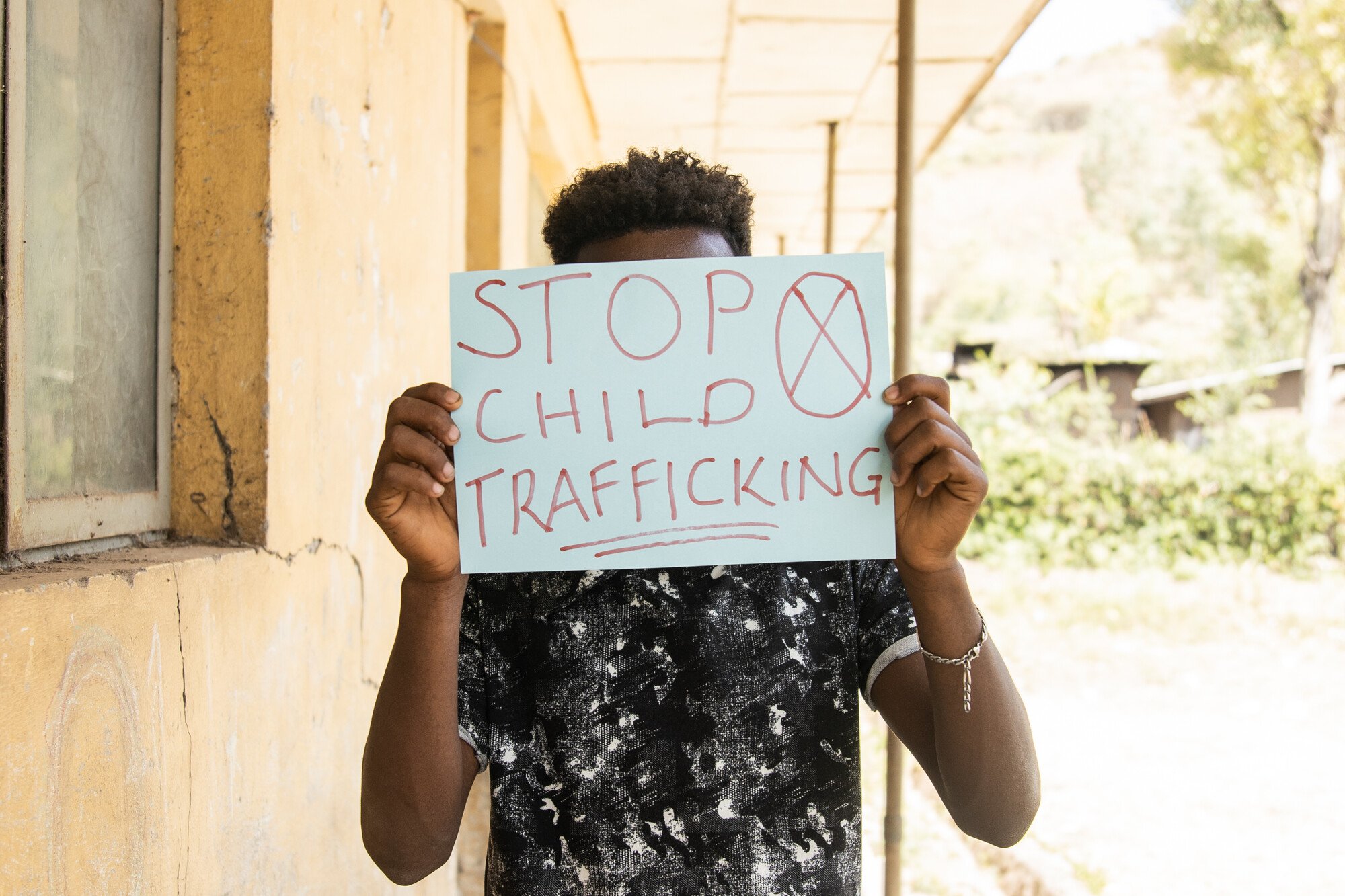Site will be
unavailable for maintenance from June. 4, 11:30 p.m., to June 5, 12:30 a.m. ET. Thank you for your
patience!
Do you believe these 3 myths about child trafficking?
Posted on 07/26/2024

When you hear the term “child trafficking,” what comes to mind? Perhaps you think of a child who is kidnapped and tied up against their will, especially in a different country. The reality, however, often looks quite different.
We teamed up with our friends at PACT, a U.S.-based organization focused on ending the commercial sexual exploitation of children, to bust three common myths about child trafficking.
Myth #1: Only girls are trafficked, and make up the majority of sexual exploitation victims.
Historically, girls have made up a significantly larger percentage of child sexual abuse victims. In recent years, however, a form of sexual exploitation called financial sextortion has been targeting boys at alarming rates. In an analysis recently conducted by NCMEC, boys were identified as victims in 90% of financial sextortion cases reported to the CyberTipline. Data from the UK organization Internet Watch Foundation confirms this trend: 91% of sextortion cases reported to IWF in 2023 targeted boys.
Boys encounter unique risks and challenges regarding reporting, such as an unwillingness to self-identify as sexually exploited due to shame and stigma, or a lack of screening and intake by law enforcement and social services agencies rooted in the belief that boys are not victims of sexual exploitation. Boys also receive limited support and services compared to girls. A study by the U.S. Department of Justice found that only 15% of sexually exploited boys had received any form of specialized services, compared to 65% of sexually exploited girls.
Trafficking is just one form of sexual exploitation that children may face, and the challenges of reporting and supporting victims are different for each case, and for each child. But the pattern remains: Boys are victims of trafficking and commercial sexual exploitation, and are too often overlooked.
Myth #2 Children are forced into sex trafficking via kidnapping and are restrained with ropes, duct tape, or handcuffs.
FACT: Being kidnapped by a stranger in a white van is not how most children are trafficked. Houston-based organization United Against Human Trafficking estimates that fewer than 10% of sex trafficking cases occur by kidnapping. Traffickers are more likely to utilize psychological and manipulation tactics, such as grooming and threats, to lure in and control their victims.
Grooming is a predatory tactic where a person builds a relationship with a child or adult to gain their trust and then abuse and exploit them. Victims are lured in with promises to fulfill their tangible and intangible needs, including offering employment, companionship, and support. In some cases, traffickers might be a family member or someone close to the victim. Young people may even consider their traffickers to be their friend or romantic partner.
“I would like [police] to understand that we are conflicted, that we have developed bonds with the trafficker,” said Cristian Eduardo, a member of the PACT Survivors’ Council. “It is hard to file a report, even when we have escaped.”
Myth #3: Child trafficking is not a big issue in the United States … and it definitely doesn’t happen near me.
FACT: Trafficking takes place throughout the world, including within the United States. It can happen in cities, suburbs, and rural areas, and affects children from all walks of life.
Under U.S. law, a child does not need to cross international or state borders to be considered a victim of trafficking– and sexual exploitation can take place completely online. As documented by calls to the National Human Trafficking Hotline, instances of suspected human trafficking have been reported in all 50 states.
Children everywhere are at increased risk of child trafficking due to increased access to the internet. Join our movement to protect children online.
Interested in learning more about how you can help end child trafficking in your community and beyond? Visit the PACT website for more information and resources!
Loading...

